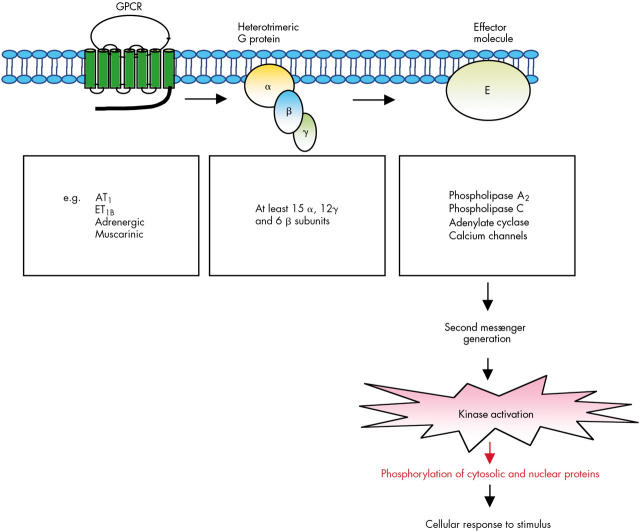Figure 1.
Basic components of a G protein coupled receptors (GPCR) signalling system. The basic components of a GPCR signalling system are the receptor, a G protein, and an effector molecule. The type of G protein employed, the subunits involved, and the effectors recruited are dependent upon the agonist and the cell type. For example, the AT1 receptor is the principal GPCR through which angiotensin II modifies cardiovascular cell function. In this system, angiotensin II binding to the AT1 receptor activates a G protein known as Gq/11 which subsequently stimulates activity of the effector molecule phospholipase C (PLC). This enzyme hydrolyses a membrane phospholipid (phosphatidylinositol 4,5-bisphosphate) to generate inositol (1,4,5)-trisphosphate (IP3) and diacylglycerol (DAG). These molecules (termed “second messengers”) respectively raise the intracellular concentration of calcium, and activate protein kinase C. This signalling system is also triggered by activation of the endothelin receptor (ET1B), or by binding of adrenaline (epinephrine) to the α1-adrenoreceptor. In contrast, stimulation of β-adrenergic receptors in the heart or vasculature causes Gαs to activate the effector molecule adenylate cyclase, leading to an elevation of the intracellular cyclic AMP concentration and to the consequent activation of cAMP dependent protein kinase (PKA). Termination (down regulation) of GPCR mediated signalling events involves a family of G protein coupled receptor kinases (GRKs). These enzymes phosphorylate activated receptors, promoting their uncoupling from G proteins and initiating their subsequent internalisation.2

